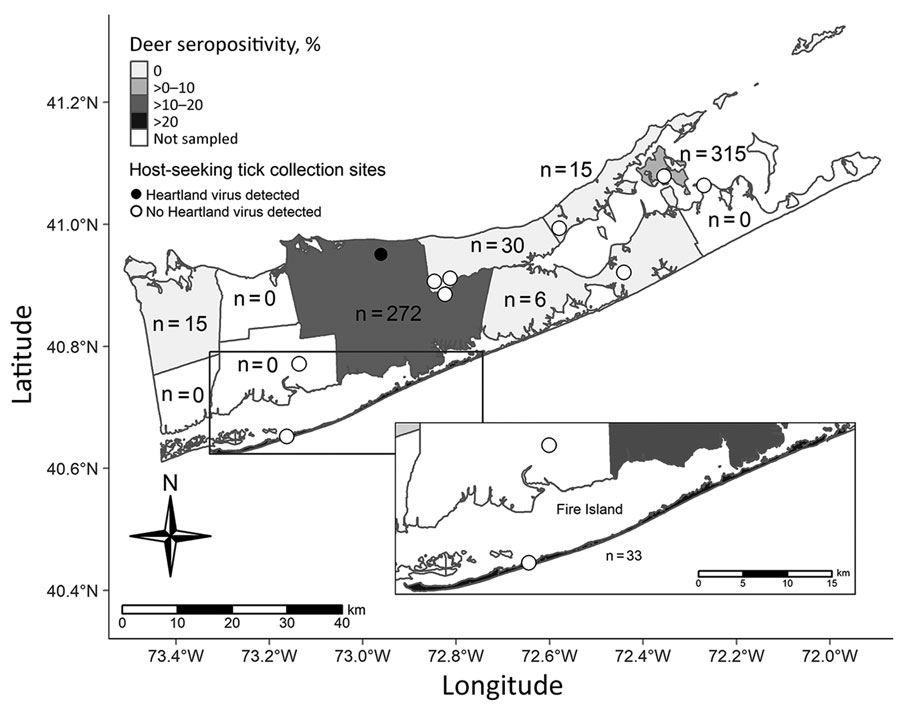Volume 27, Number 12—December 2021
Dispatch
Heartland Virus Transmission, Suffolk County, New York, USA
Figure 1

Figure 1. Tick collection sites in study of heartland virus transmission, Suffolk County, New York, USA. Numbers within townships indicate sample size of deer tested for neutralizing antibody.
1These authors contributed equally to this article.
Page created: August 16, 2021
Page updated: November 09, 2021
Page reviewed: November 09, 2021
The conclusions, findings, and opinions expressed by authors contributing to this journal do not necessarily reflect the official position of the U.S. Department of Health and Human Services, the Public Health Service, the Centers for Disease Control and Prevention, or the authors' affiliated institutions. Use of trade names is for identification only and does not imply endorsement by any of the groups named above.